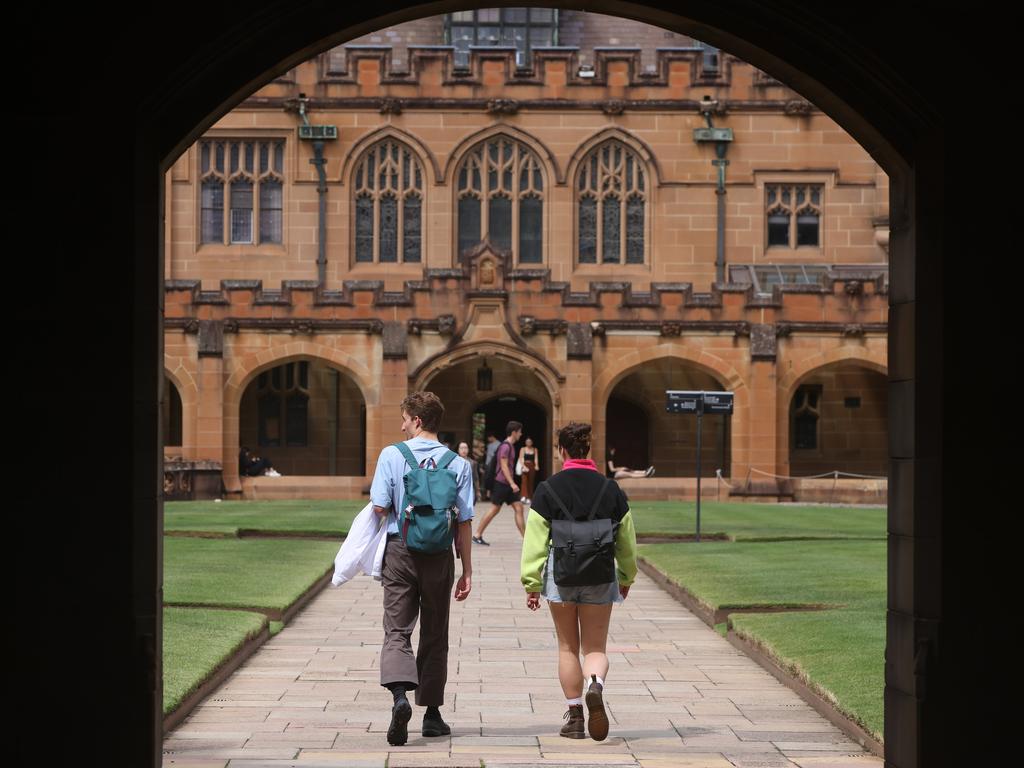
Virtually all of the population growth last year was the result of natural increase, as net overseas migration contributed only 2.4 per cent to the total. In recent years, the contribution of NOM has hovered at about 60 per cent.
The low population growth was overwhelmingly the result of the international borders being closed. What we don’t know is what will happen when the borders reopen, and what policy settings will be imposed that will influence the size of NOM.
If repeated surveys of the population are to be believed – and there is no reason to doubt them – the majority of Australian residents will have regarded the much slower growth of the population and the associated decline in the number of migrants as a very good thing.
But the federal government has given a number of indications that point to support for a resumption of net overseas migration at pre-Covid levels.
Take this statement from the May budget: “Net overseas migration is significantly affected by international travel restrictions … it is forecast to fall from about 194,000 persons in 2019-20 to be around -97,000 persons by the end of 2020-21, and then to -77,000 in 2021-22 before increasing to 235,000 in 2024-25.”
In other words, the expectation is that NOM will actually be higher in 2024-25 relative to 2019-20. We also know this from the Population Statement released by Treasury’s Centre for Population. Here we are told that “migration will be a key component of Australia’s economic and health recovery from Covid-19. The government will maximise the economic benefits of the migration program by addressing skill shortages, attracting highly skilled migrants in niche industries … and supporting regional migration.”
If you look at the centre’s projections, the expectation is that NOM will increase to 240,000 per year by the middle of the decade. We also know that, in the short term, the federal government is doing everything it can to ease the entry of migrants by allowing the states to run schemes to house international students (on our dime) and to implement a program for farm workers from South-East Asian countries. These initiatives come on top of the ludicrous decision to remove the maximum number of hours international students can work (it was 20 hours a week).
An important development in this debate occurred last week. Reserve Bank governor Phil Lowe explicitly acknowledged that immigration has contributed to slow wage growth, which in turn has led to inflation being lower than the bank’s target range of 2 to 3 per cent per year.
“What used to happen before the pandemic is if there was a shortage in the labour market for a particular skill, firms could go overseas and tap the global labour market. That meant that if there was very strong demand for workers with a particular skill, the price, the wage, didn’t really move very much because you could go and get workers overseas,” he said.
Now if this observation has only just dawned on him, he has clearly been living under a rock. It’s been the case for years, particularly since the middle of the past decade when migrant numbers were substantially increased.
It’s also an explanation of the persistence of low wage growth, even in the face of skill shortages and unfilled job vacancies. Rather than lock in higher wages and hence a higher cost base, many businesses are just treading water until high rates of immigration resume and they can source migrant workers at lower rates of pay.
The reality is that it has been far too easy for employers to sponsor migrant workers at relatively low pay rates. (The Temporary Skilled Migration Income Threshold, for example is only $53,900, which is significantly less than median earnings.) And it’s not just in the skilled and semi-skilled segments of the labour market that migration has an impact. The fact we have had so many international students coming into the country – their numbers increased by 80 per cent between 2010 and 2019 – who need to work to pay their fees and cover their living expenses has impacted dramatically on the relatively unskilled segment of the labour market. It is also a segment of the labour market where non-compliance with award rates of pay and other regulations is rife.
To be sure, it suits low-paying industries such as hospitality and retail to have such a large pool of potential workers. But international students compete for jobs with young Australian-born residents – and, in the process, drive down wage growth. This week we saw a remarkable drop in the rate of unemployment, from 5.5 per cent to 5.1 per cent, one of the largest month-to-month falls since monthly figures were first collected in 1978. There were an additional 115,000 employed persons in month of May.
The rate of youth unemployment is now lower than it has been for 12 years, and underemployment (people wanting to work more hours per week) is below the pre-Covid rate.
These fantastic results are being partly driven by the absence of recently arrived migrants and the outflow of migrants. The only option for employers is to take on locals, which has the effect of driving down the (observed) rate of unemployment and ramping up (observed) employment. (Only migrants who have resided in Australia for at least 16 months are included in the labour force survey.) A return to NOM at previous levels would reverse this effect, at least in part.
The industry associations, business lobbyists, farmers, universities and property developers are constantly knocking on the doors of ministers to increase migrant numbers in particular categories. It’s so much easier than bidding up wages, investing in training local workers and selling to a stable number of consumers.
The government should not be afraid to engage in an open debate with the Australian people. It might even be an election-winning policy to propose much lower levels of immigration.






Last week the Australian Bureau of Statistics released figures showing, in the calendar year ending on December 31, 2020, our population rose by 136,300, or 0.5 per cent. This compares with the figure of 386,800 for 2019, which was almost three times higher.